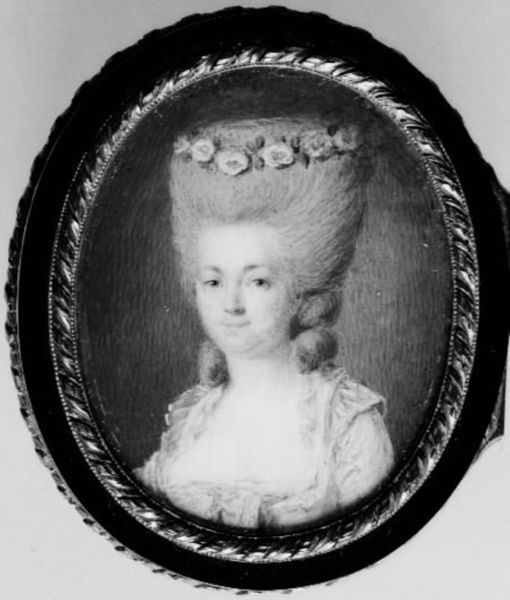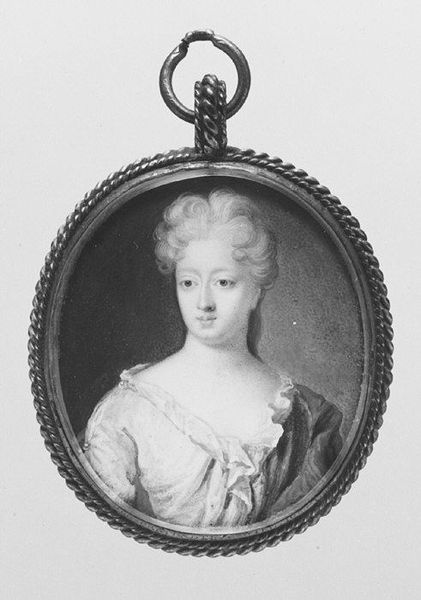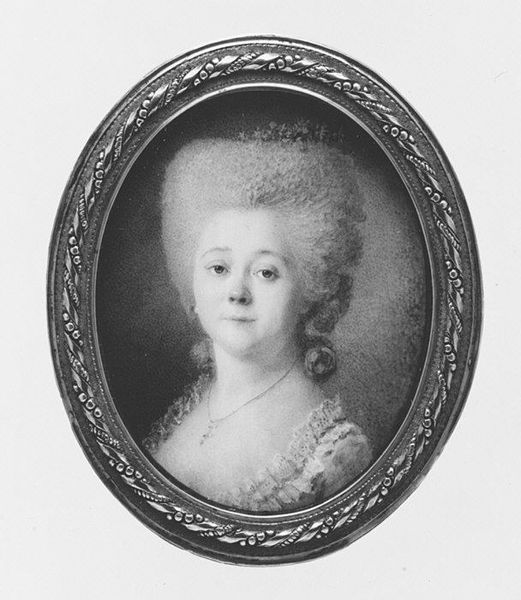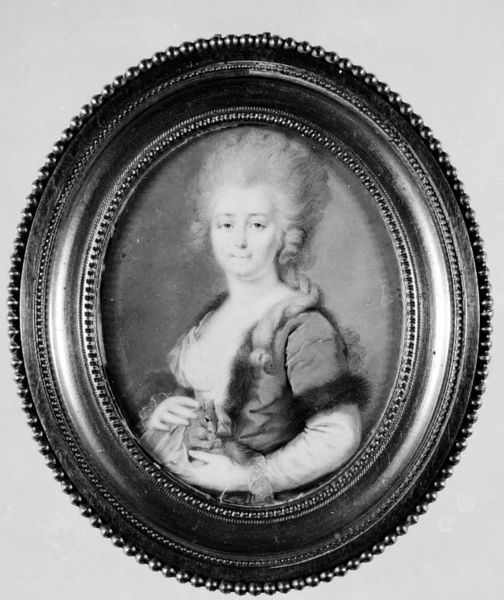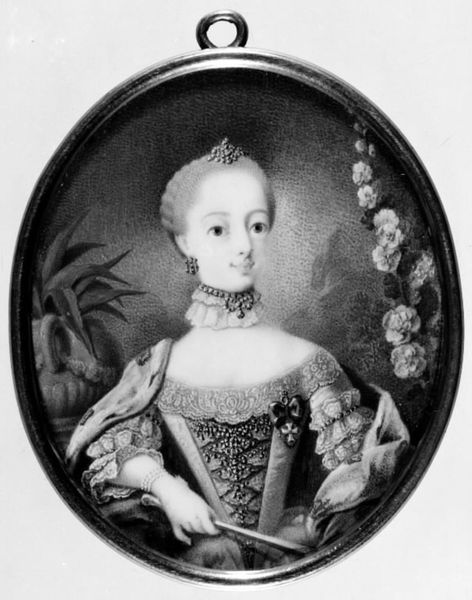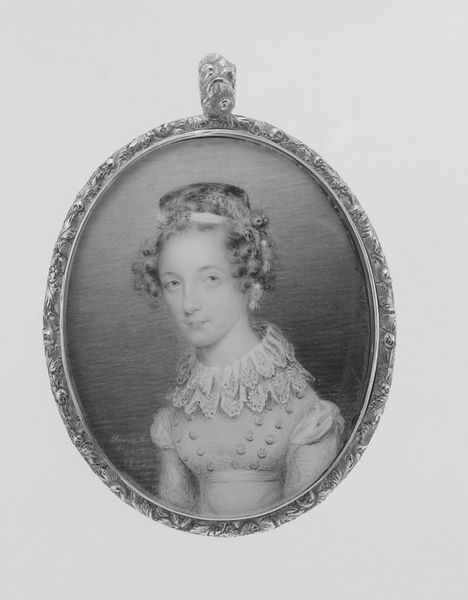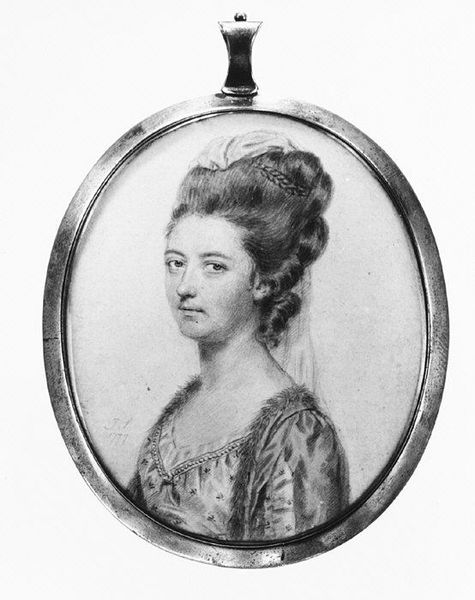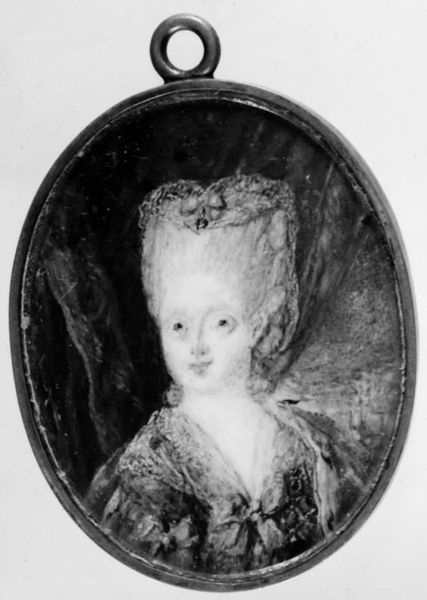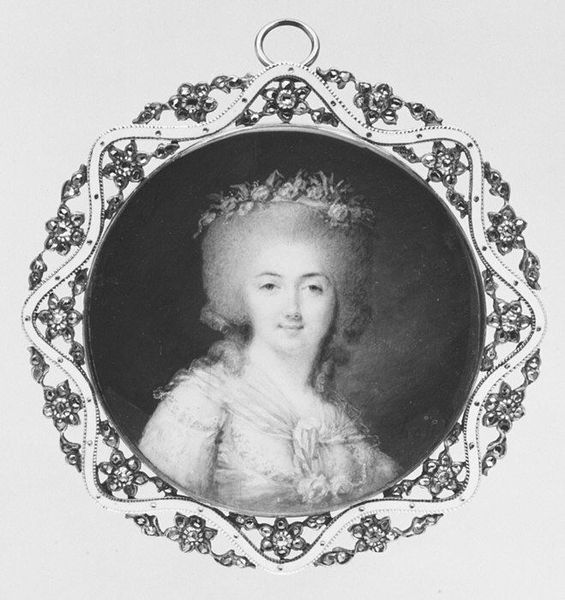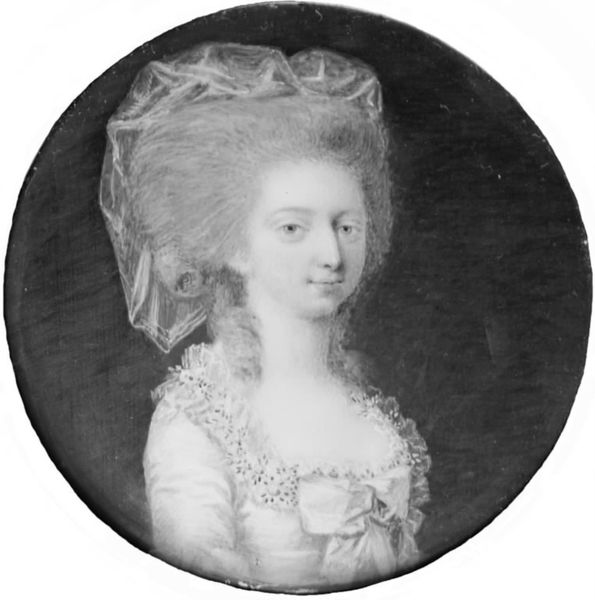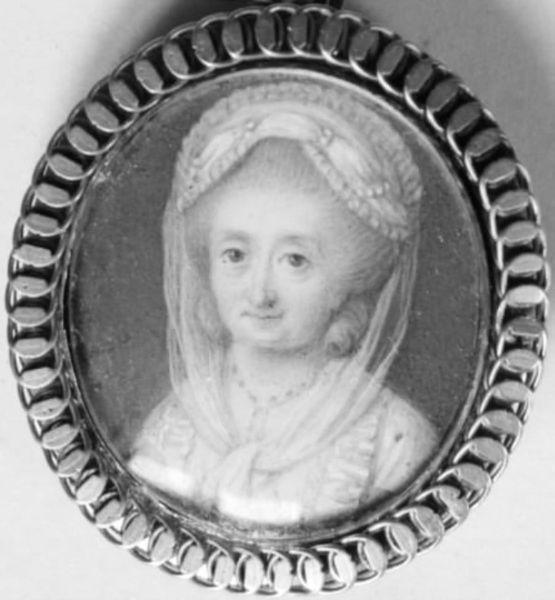
painting
#
portrait
#
painting
#
academic-art
#
miniature
#
rococo
Dimensions: 4.9 cm (height) x 3.8 cm (width) (Netto)
Curator: Standing before us is a captivating miniature, "Portrait of a Lady" by Robert Mussard, dating back to 1769. It's a jewel of Rococo artistry held by the SMK, Statens Museum for Kunst. Editor: The first thing that strikes me is its intimacy, a world held within the confines of that oval frame. She looks out at the viewer with quiet assurance. It makes you want to know what she knows. Curator: Mussard worked during a period where portraiture served a crucial function in solidifying social status, but also, perhaps more subtly, advancing certain ideals of womanhood. In this context, miniatures served an important role because of their portability and privacy. Who was she intended for? How would it circulate within the social networks of the period? These are some questions I'd consider here. Editor: Exactly! The pearls, the meticulously arranged hair, they signal status, sure, but I also wonder what freedoms were allowed – or perhaps more aptly, denied – to her within that social structure. This is a Rococo-era representation of womanhood, yes, but what were the material conditions underpinning it, the power dynamics woven into the very fabric of her existence? I want to situate her story within a larger matrix of gender and social class. Curator: And the painting itself! There is a certain flatness to the rendering, almost as if the paint has barely settled on the surface, emphasizing its delicate artifice. This work asks us to examine the very language used to create femininity. Editor: That is the appeal of works like this, isn't it? How it exposes not just the representation, but also hints at all that's concealed by the representation: the socio-political history and even her inner experience, struggles, perhaps dreams we can only imagine. Curator: An astute observation! Ultimately, a portrait like this prompts us to question how these very small objects served in negotiating visibility and selfhood in eighteenth-century Europe. Editor: Well, this certainly prompts new conversations. Thanks for your thoughts, they're useful in recontextualizing and interrogating how museums are showing their work today.
Comments
No comments
Be the first to comment and join the conversation on the ultimate creative platform.
